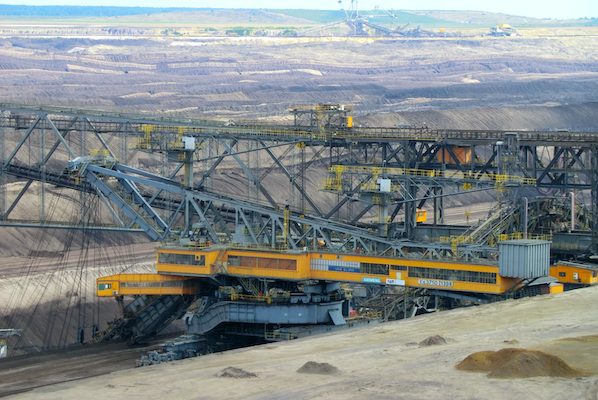
A revolution wouldn’t be a big deal if it didn’t have long, far-reaching effects. The American Revolution was not only the birth of a superpower, but it signaled the beginning of the downfall of the previous superpower, the British Empire. Revolutions in France, Russia, and China upended the balance of power and systems of government for generations to come, with kings, czars, and emperors falling. Though not precipitated by violence and blood spill, the ripples of the Industrial Revolution were felt worldwide for decades to come. And it all started with power looms, cotton gins, and water and steam power greatly multiplying the output of workers and transforming the production of goods from handmade to manufactured. Later came electrical grids, steel, and assembly lines to upend the world across industries, from transportation to communications to business management. A third Industrial Revolution would shake up the world again, this time introducing the internet, home computing, and mobile phones, which as we know today has changed the human experience profoundly.
This brings us to the fourth Industrial Revolution (also known as Industry 4.0), which has pushed the technologies founded in the previous era toward advanced automations and smart technologies. We talk a lot in this space about the effect of smart manufacturing in the “farm-to-fork” model and how transformational intelligence, contextualized data, and advanced material traceability has supercharged yields, virtually eliminated recalls, and saved companies tens of millions of dollars in operational savings. But this particular revolution has far-reaching effects beyond that of the food & beverage and pharmaceutical worlds. These same technological breakthroughs can be applied to mineral manufacturing with great effect.
Mining 4.0
Like any other industry, mineral processing and manufacturing results in a colossal amount of data. An operation lacking in Industry 4.0 capabilities cannot operate at its most efficient peak. It’s squandering invaluable data and quality metrics.
The enormous complexity of high-volume circuits consisting of hydrometallurgical processes, multiphase mass transfer, and more demands precise process control. Incorporating Industry 4.0 technologies makes it possible to collect and analyze the data kicked out by such complexities, act on the resulting insights, and capitalize.
Artificial intelligence (AI) allows manufacturing operators, engineers, and data scientists to use historical data to optimize their manufacturing and processing operations. Indeed, AI unites and makes sense of previously disparate fountains of data, making connections that would otherwise go undetected. Combined with machine learning (ML), factory digital-twin modeling is made possible, in which great intelligence can be extracted with far less real-world trial and error.
Smart manufacturing powered by AI and ML also connects dots previously left floating among a constellation of data. Now a larger overview can be achieved with greater insight into workforce design, operating expense, and safety thanks to data history, semantic modeling, data querying, and material ledger.
Failure Is A Process, Not A One-Time Event
Predictive maintenance becomes possible with Industry 4.0 tech. Asset monitoring via internet of things (IoT) sensors can detect anomalies before they become full-blown failures with crippling downtime. Caught on time, these anomalies can be addressed with low-cost maintenance before cost-prohibitive fixes or replacement is required. Root-cause analysis and proactive planning minimizes process disruptions, redundant maintenance, and removes the element of human diagnostic error. Condition monitoring leads to maximum asset uptime and has been found to reduce maintenance spend by 14 percent, or roughly $8 million in operating expense savings (per PwC).
Further, as reliability rises in mining operations, so too does employee safety. The result can be as pronounced as millions of dollars per year in savings based on maintenance cost recovery and significant boosts to capacity. Driverless, remote-controlled mining also spares immediate human risk, as does other sensor-based or machine-to-machine technology that reduces the need for human input, such as in sorting machinery and mechanized excavating tech. The time to complete tasks is also significantly reduced when you allow technology to bear the brunt of the risk.
Reductions to energy consumption and greater compliance with environmental requirements are other positive side effects. With the importance of green processes, diversity, and inclusion mounting across all businesses, it is more critical than ever to adopt a forward-facing culture that embraces enhanced transparency across the full value chain. Organizations with inclusive cultures are in fact three times more likely to be high-performing and two times more likely to meet or exceed financial targets.
In other words, the time is now to implement ThinkIQ’s smart manufacturing process to carefully track raw materials throughout your mine-to-metal supply chain. Our solutions integrate with your assembly line details so you can monitor and better understand every anomaly and make stronger, safer, more cost-effective products. Contact one of our experts today to join the Industry 4.0 smart manufacturing revolution.


